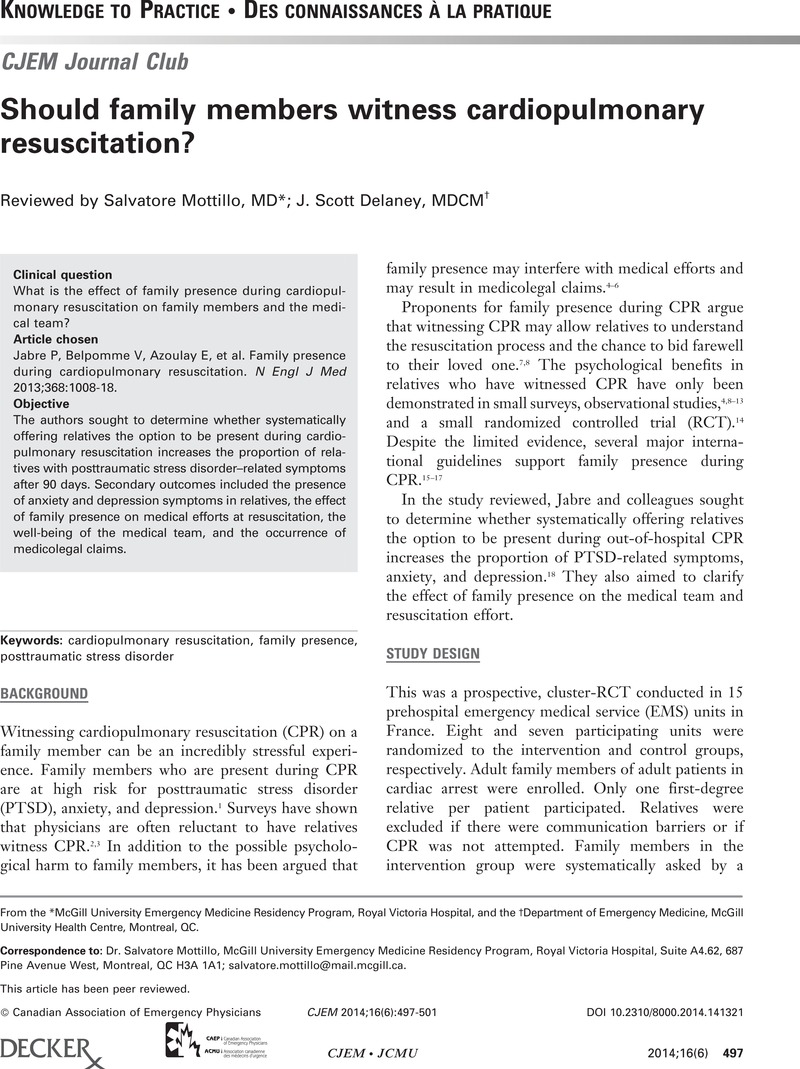Crossref Citations
This article has been cited by the following publications. This list is generated based on data provided by Crossref.
Asencio-Gutiérrez, J.M.
and
Reguera-Burgos, I.
2017.
La opinión de los profesionales sanitarios sobre la presencia de familiares durante las maniobras de resucitación cardiopulmonar.
Enfermería Intensiva,
Vol. 28,
Issue. 4,
p.
144.
Asencio-Gutiérrez, J.M.
and
Reguera-Burgos, I.
2017.
The opinion of health professionals regarding the presence of relatives during cardiopulmonary resucitation.
Enfermería Intensiva (English ed.),
Vol. 28,
Issue. 4,
p.
144.
Blanco, Alicia Pérez
2017.
How Do Healthcare Providers Feel About Family Presence During Cardiopulmonary Resuscitation?.
The Journal of Clinical Ethics,
Vol. 28,
Issue. 2,
p.
102.
Kapfhammer, Hans-Peter
2022.
Depression, Angst, traumatischer Stress und internistische Erkrankungen.
p.
993.
Labbée, Dominique
and
Aucoin, Suzanne
2023.
La famille au chevet du patient en salle de réanimation : comment les infirmières le vivent-elles réellement ?.
Soins d’urgence,
Vol. 1,
Issue. 1,
p.
42.





